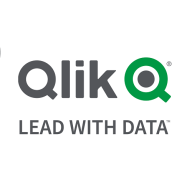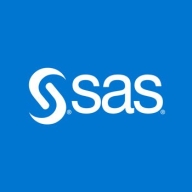


Find out what your peers are saying about Microsoft, Salesforce, Oracle and others in Reporting.
The enterprise subscription offers more benefits, ensuring valuable outcomes.
This saves a significant amount of time, particularly for reports that would have needed around fifty people.
The ROI of using Tableau extends to its seamless integration across various platforms, as it's from Salesforce and thus not limited to any specific cloud provider.
They provide callbacks to ensure clarity and resolution of any queries.
They provide quick email and phone responses and have Thai-speaking personnel.
Technical support has been very responsive.
I find Tableau's technical support to be good with elite support, but it struggles with usual, general support.
Tableau is easy to use across various dimensions, whether on-premises or on the cloud.
The solution is fully scalable and performs well even with large datasets, provided there is proper supporting hardware.
Tableau's data blending capabilities are an added feature.
SAS Visual Analytics is stable and manages data effectively without crashing.
I rate the stability a five or six because Tableau updates very often with new versions or patches.
In terms of configuration, I would like to see AI capabilities since many applications are now integrating AI.
Pricing is also a concern for me as it is expensive compared to TIBCO Spotfire Enterprise licensing and Microsoft Power Platform.
The product owner should enhance its benefits or clarify its role.
It sometimes requires extensive investigation to determine why the data does not appear correctly.
Power BI as a much cheaper alternative.
Tableau is rated an eight because it is pretty expensive compared to alternatives like Power BI.
I think Tableau is expensive compared to TIBCO Spotfire Enterprise licensing and Microsoft's Azure and Power Platform.
The ability to query information from our Excel data into SAS to view specific data is invaluable.
Building hyper extracts and visualization capabilities make Tableau a robust tool for data analysis.
Tableau serves as a stable dashboarding tool for higher management, aiding in quick decision-making.
The real-time data processing eliminates the lack of timely reports or dashboards, allowing for hour-by-hour updates instead of monthly or weekly ones.



QlikView is a Business Intelligence tool that allows you to keep tabs on all of your business-related information in a clean, clear, and easy to access database that is intuitive to build and simple to navigate. It is ideal for business owners who wish to improve overall output by creating the most productive system possible.
SAS Visual Analytics is a data visualization tool that is used for reporting, data exploration, and analytics. The solution enables users - even those without advanced analytical skills - to understand and examine patterns, trends, and relationships in data. SAS Visual Analytics makes it easy to create and share reports and dashboards that monitor business performance. By using the solution, users can handle, understand, and analyze their data in both past and present fields, as well as influence vital factors for future changes. SAS Visual Analytics is most suitable for larger companies with complex needs.
SAS Visual Analytics Features
SAS Visual Analytics has many valuable key features. Some of the most useful ones include:
SAS Visual Analytics Benefits
There are many benefits to implementing SAS Visual Analytics. Some of the biggest advantages the solution offers include:
Reviews from Real Users
Below are some reviews and helpful feedback written by PeerSpot users currently using the SAS Visual Analytics solution.
A Senior Manager at a consultancy says, “The solution is very stable. The scalability is good. The usability is quite good. It's quite easy to learn and to progress with SAS from an end-user perspective.
PeerSpot user Robert H., Co-owner at Hecht und Heck GmbH, comments, “What I really love about the software is that I have never struggled in implementing it for complex business requirements. It is good for highly sophisticated and specialized statistics in the areas that some people tend to call artificial intelligence. It is used for everything that involves visual presentation and analysis of highly sophisticated statistics for forecasting and other purposes.
Andrea D., Chief Technical Officer at Value Partners, explains, “The best feature is that SAS is not a single BI tool. Rather, it is part of an ecosystem of tools, such as tools that help a user to develop artificial intelligence, algorithms, and so on. SAS is an ecosystem. It's an ecosystem of products. We've found the product to be stable and reliable. The scalability is good.”
Tableau is a tool for data visualization and business intelligence that allows businesses to report insights through easy-to-use, customizable visualizations and dashboards. Tableau makes it exceedingly simple for its customers to organize, manage, visualize, and comprehend data. It enables users to dig deep into the data so that they can see patterns and gain meaningful insights.
Make data-driven decisions with confidence thanks to Tableau’s assistance in providing faster answers to queries, solving harder problems more easily, and offering new insights more frequently. Tableau integrates directly to hundreds of data sources, both in the cloud and on premises, making it simpler to begin research. People of various skill levels can quickly find actionable information using Tableau’s natural language queries, interactive dashboards, and drag-and-drop capabilities. By quickly creating strong calculations, adding trend lines to examine statistical summaries, or clustering data to identify relationships, users can ask more in-depth inquiries.
Tableau has many valuable key features:
Tableau stands out among its competitors for a number of reasons. Some of these include its fast data access, easy creation of visualizations, and its stability. PeerSpot users take note of the advantages of these features in their reviews:
Romil S., Deputy General Manager of IT at Nayara Energy, notes, "Its visualizations are good, and its features make the development process a little less time-consuming. It has an in-memory extract feature that allows us to extract data and keep it on the server, and then our users can use it quickly.
Ariful M., Consulting Practice Partner of Data, Analytics & AI at FH, writes, “Tableau is very flexible and easy to learn. It has drag-and-drop function analytics, and its design is very good.”